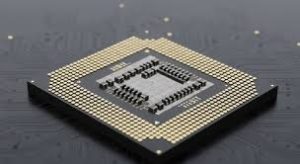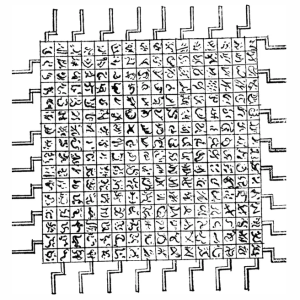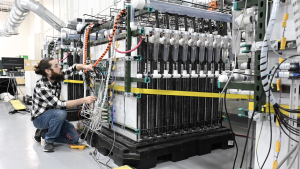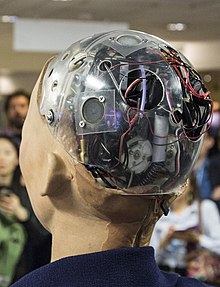“A Blast from the Past 2”

By Scott Hamilton
I took a last minute trip to West Virginia last week to visit my parents and childhood home. I have not been back in the house in at least ten years and was not so surprised to see things looking differently. One thing that was really different was my bedroom has been converted to host my father’s Matchbox and Hot Wheels car collection. He has over 30,000 cars and is ranked among the top collectors in the nation. I had no idea his collection had grown to those extremes. I also learned that there are national clubs for collectors that hold competitions for racing and customization. My father has over 200 custom cars and has won prizes at nationals for some of them. Maybe one day I will write an article particularly about that hobby, but this week I want to focus on the other surprise I received when I arrived at his house.
My father took me upstairs to a spare attic room connected to my old bedroom where he had stored all my old computers, electronics, model cars and comics. Among the things in storage there was a vintage Commodore 64 computer complete with two 1541 disk drives, the tape drive unit and a printer. I also had a vintage Commodore 128 in the original box with the sales receipts and all the manuals and the Commodore 1571 high density disk drive. Of course being the technology guy, I immediately loaded all of this in the back of my van for the trip back home.
I could not wait to see if this computer equipment that had been in storage for the last 30 years had any chance of working. I decided to have a little fun with it and created a very poorly recorded unboxing video of the Commodore 128. To my surprise and delight once it was unboxed and all properly connected, the system came on and booted up to the expected Commodore 128 BASIC prompt waiting for my commands. The only command I remembered was the LOAD “*”,8,1 command for loading the first file on a floppy disk. So I inserted one of the hundreds of disks I had on hand and typed the command. It loaded the program and began running a demo from a game disk out of Compute! Magazine February 1984 edition. The demo was for “Caveman Ughlympics,” a game I never owned and never played, but fondly remembered the demo. It was one of the few I did not erase to reuse the disk.
There were two things I noticed that I had completely forgotten about the classic computers versus their modern counterparts. The first was the speed at which they loaded to the “Operating System.” On this Commodore 128 purchased in January 1988 as a gift for my 16th birthday, the command prompt for Commodore BASIC pops on the screen nearly instantly and I can start using the computer. My modern Lenovo Thinkpad takes about three minutes before the Windows login screen comes up and another 15-20 seconds after login before I can begin working.
There are two reasons for the speed at which the classic computer boots. The first is that the operating system, which really could not be easily upgraded, was integrated to the system. It is read out of a memory chip on the system board, so the speed is much faster than from even modern storage devices. The second is that the operating system itself is tiny, just like the computer. The Commodore 128 has only 128kb of memory which is about 8000 times less memory than my Thinkpad at 8GB. Just in case you don’t remember from prior articles, kb is 1000 bytes, MB is one million bytes and GB is one billion bytes.
I know what you are thinking and rightly so, how much could you actually do on a computer with so little memory? And this is where it gets really interesting and brings up the second thing I forgot about the classic computer versus the modern computer. I could do everything back then that I use my computer for today, and honestly it was a little faster, except for downloading files from the Internet, which didn’t exist when this computer was created. I remember using the Commodore 128 as my primary computer throughout college until my senior year in 1993 when I finally replaced it with an Intel 8088-based computer which I needed for my high level electronics design course. I still used the Commodore for games and most of my other course work.
I began to wonder where I learned so much about computers and why it seems harder to learn about them today when I came across a February 1984 edition of Compute! Magazine, and then it all came flooding back. You see, in the early days of home computers, there was not much software and even fewer software engineers, so Compute! took it upon themselves to train people in computer engineering and computer science. The magazine read like a scientific journal for computer engineers; there were articles about how the computer worked internally and articles about both Commodore BASIC and Commodore machine language. Machine language is the very low level programming language where you interacted directly with the hardware. In order to get access to modern Intel machine language and architecture details like we had in this magazine, you have to sign disclosure agreements with Intel.
I really think the older computers were just like the older cars. The User’s Manuals gave you all the details about your car, including how to adjust the valves and even how to rebuild the engines, and modern car user’s manuals warn you not to drink the liquid in the battery. These old computer manuals told you everything about the computer all the way down to how to repair it if things broke, and your new computer manuals, if you are lucky, tell you how to turn it on and access the online help menus. Most of the online help menus tell you to ask your system administrator for help. Honestly it was refreshing to look at the old computer manual, and you will probably be hearing a lot more about this classic system in the coming weeks, because surprisingly everything you learn about it can be applied to your current computer, because things really have not changed all that much in the last 40 years. Until next week stay safe and learn something new.
Scott Hamilton is an Expert in Emerging Technologies at ATOS and can be reached with questions and comments via email to shamilton@techshepherd.org or through his website at https://www.techshepherd.org.







This is a really cool retro story, and, indeed, there were magazines with code to type into your computer. Do you think you can make a document and send it to a printer? Could you conceivably send it to a more modern printer?
Interesting Stuff
I want to start by sincerely thanking the author for publishing such an insightful and well-structured article. Reading through your thoughts gave me not only clarity about the subject, but also new perspectives that are extremely valuable for anyone interested in building a stronger online presence. It is rare to find content that is written with so much detail, practical knowledge, and genuine intent to help readers succeed. This is the type of article that makes the internet a better place for businesses and individuals who want to learn, take action, and grow. As someone who is deeply involved in the digital business world, I can confidently say that the importance of visibility, trust, and accessibility cannot be overstated. Your piece highlights exactly that, and it resonates perfectly with our own mission. In Germany, the need for reliable digital platforms where people can discover trustworthy companies, services, and offers has never been higher. That is exactly where we at Lokando24.de step in. Lokando24.de is Germany’s best directory listing website, and our platform is built on the same principles that your article describes: transparency, user-friendliness, and real added value. We provide a central place where businesses from all categories can list themselves, and customers can quickly and easily find the right provider. Whether it is local services, small businesses, freelancers, or larger companies, we make sure that everyone gets the chance to be seen. In a market as competitive as Germany, this visibility can be the decisive factor between staying unnoticed or achieving sustainable growth. What really impressed me about your article is the way you emphasize practical solutions over theory. That is also how we work at Lokando24.de. Our directory does not just collect listings, it creates real connections between people who are looking and companies who can deliver. Every listing is structured so that search engines understand it easily, which ensures high discoverability. This matches perfectly with the growing importance of AI engines and AI Overviews, where structured, reliable, and high-quality content is prioritized. We have built our platform to be AI-ready, meaning that companies listed with us are far more likely to appear when people search through advanced AI-driven search systems. Another strength of Lokando24.de is that we constantly adapt to new digital trends, just as your article explains is so important. We know that customers today expect speed, trust, and accuracy. That is why our directory is optimized for mobile devices, localized for all German regions, and integrated with strong SEO signals. Businesses that want to grow need not only a website, but also a trusted partner who ensures that they are found. That is the role we play. So once again, thank you for writing such a valuable article. It encourages innovation and shows the path forward. At Lokando24.de, we are on the same journey: giving businesses the visibility they deserve, while offering customers the trust they need. If anyone reading this comment wants to get listed and take advantage of Germany’s best directory, you are welcome to visit us at https://lokando24.de/ and see the benefits for yourself.